Free Water for Your Garden
Although we live in an arid region, we can experience significant winter rain and summer monsoon events. Instead of letting your rainwater run down the street, you may want to consider harvesting the rain to help water your landscape.
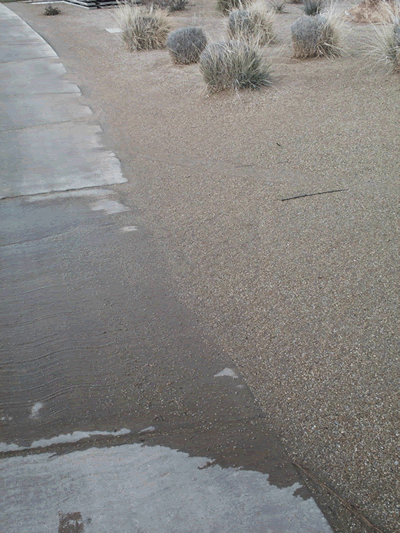
Photographer: Kathleen Moore
Instead of letting rain water erode your landscape, capture it so it can benefit plants.
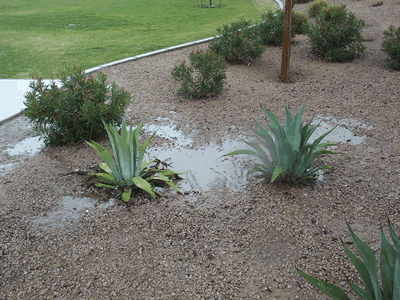
Photographer: Kathleen Moore
Rainwater is captured here in a depression in the landscape.
Rainwater harvesting involves taking action to preserve and use the rainwater on your property. Here are some of the many advantages of using rainwater in your landscape:
| • | Rainwater is better for most plants. Your plants will appear and be healthier, and also be able to better withstand drought and extreme temperatures. |
| • | If allowed to absorb into the soil, less rainwater is lost to evaporation. Deeper water penetration encourages worms and other organisms which make the soil healthier. |
| • | Rainwater is free and conserves our community’s water resources. |
| • | Landscape erosion and street flooding are reduced. |
Typically, rainwater is harvested in two ways:
| 1) | Earthworks - Encourage the water to soak into and be stored in the soil by constructing earthworks such as basins, depressions, berms, or on-contour trenches (called swales). |
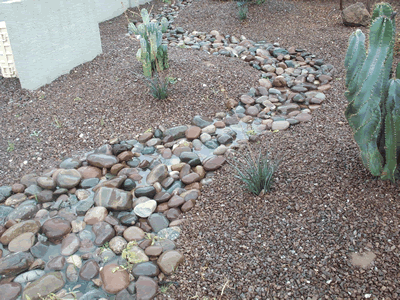
Photographer: Kathleen Moore
The rain collected provides water to the surrounding plants.

Photographer: Christina Bickleman
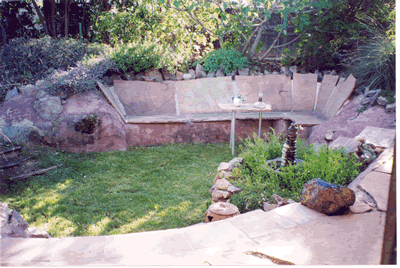
Photographer: Christina Bickleman
Rain collects in this low point and is used to irrigate grass.
Tips: Water should soak in within one day. Construct your water
catchments five to seven feet away from building foundations.
| 2) | Catchments - Collect and store water from gutters in containers such as enclosed barrels or tanks. |
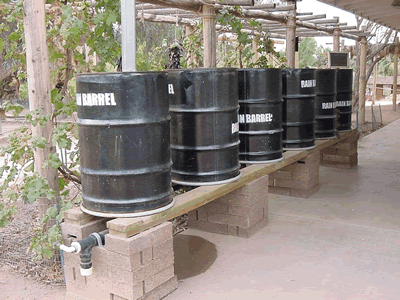
Photographer: Jo Miller
Tips: Make sure the containers are sealed or use mosquito dunks to control
mosquitoes. Check your homeowner association requirements before
installing.
To assess your potential for harvesting water it is helpful to spend some time outside observing what happens after a rain. In a one-inch rain event the average house can shed well over 1,000 gallons of water off the roof. Where is this water going?
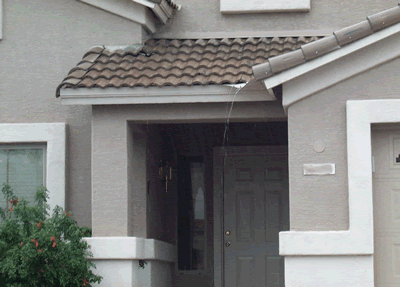
Photographer: Kathleen Moore
The rain running off this roof could easily be directed to a planting area.
Drawing a map of your property will help you determine where you have the potential for collecting water on your property. Your map should include the following:
| • | Indicate with arrows the pitch of the roof and the direction water flows from your roof. |
| • | Indicate the high and low point of your property, marking any low spots where water tends to accumulate. |
| • | Make note of any areas where water flows on or near your property from an outside source. |
| • | Indicate the direction of water flow from any slopes. |
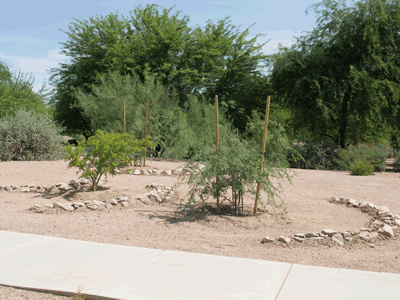
Photographer: Kathleen Moore
Slow water down by adding berms in a sloped landscape.
Once you have observed the flow of water on your property, you are ready to start with some simple harvesting techniques. Small earthworks such as berms or basins may be the easiest place to start. Start small and build on your successes.
Jo Miller
Water Conservation Program Manager
City of Glendale